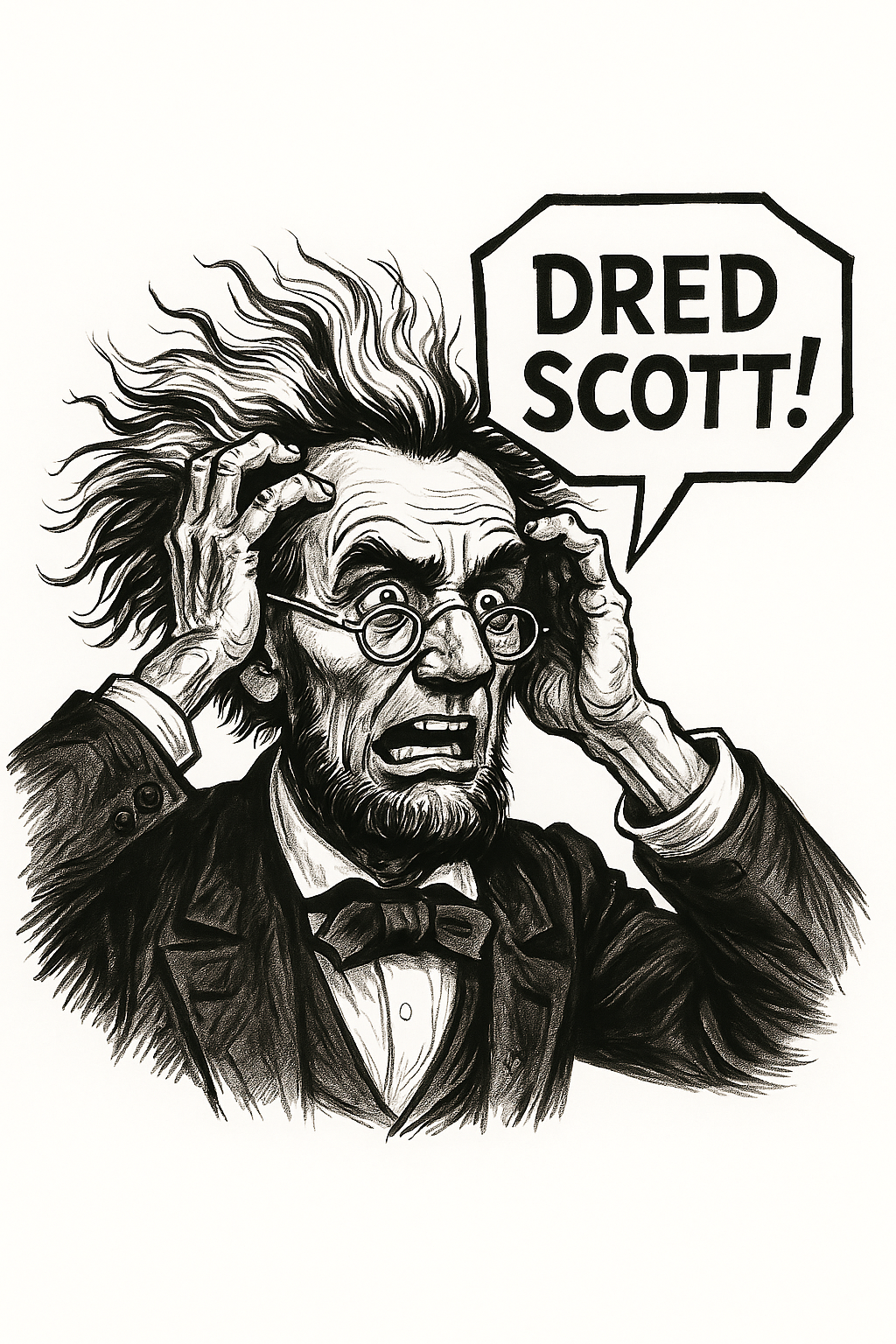
The Dred Scott Case
Share
A Turning Point for the Abolition Movement and Abraham Lincoln’s Role
As we approach the 250th anniversary of the Declaration of Independence, Quarter Millennial reflects on pivotal moments in American history that shaped the nation’s commitment to liberty and justice. The Dred Scott v. Sandford case, decided on March 6, 1857, stands as one of the most consequential Supreme Court decisions, igniting the abolition movement and propelling Abraham Lincoln into the national spotlight as a champion of freedom. This blog post explores the case, its impact on the fight against slavery, and Lincoln’s critical role in its aftermath, aligning with our mission to celebrate and advocate for America’s enduring principles. For a concise overview of this history, check out PragerU’s video, “Dred Scott v. Sandford: A Slave’s Fight for Freedom,” which offers an engaging summary of the case and its significance.
The Dred Scott Case: A Denial of Freedom
Dred Scott, an enslaved African American man, filed a lawsuit for his freedom on April 6, 1846, in Missouri state courts, arguing that his residence in free territories—Illinois and the Wisconsin Territory—rendered him free under the Missouri Compromise of 1820. Scott’s case escalated to the U.S. Supreme Court, where oral arguments were heard on February 11–14, 1856, and reargued on December 15–18, 1856, before the court delivered its ruling.
On March 6, 1857, the Supreme Court, led by Chief Justice Roger B. Taney, issued a 7-2 decision against Scott. The ruling declared that African Americans, whether enslaved or free, were not U.S. citizens and thus had no standing to sue in federal courts. Furthermore, the Court ruled that Congress lacked the authority to ban slavery in federal territories, effectively nullifying the Missouri Compromise and opening all territories to slavery. Taney’s opinion went further, asserting that the Declaration of Independence’s principles of equality did not apply to African Americans, a stance that shocked abolitionists and intensified sectional tensions.
Significance to the Abolition Movement
The Dred Scott decision was a devastating blow to the abolition movement, but it also served as a catalyst for its growth. By denying African Americans citizenship and expanding slavery’s potential reach, the ruling galvanized anti-slavery forces across the North. Key impacts included:
-
Mobilizing Abolitionists: The decision outraged abolitionists, who saw it as a betrayal of American ideals. On May 14, 1857, Frederick Douglass delivered a powerful speech condemning the ruling, declaring it would “arouse the moral sense of the nation.” Abolitionist newspapers and organizations intensified their efforts, rallying public support against slavery’s expansion.
-
Strengthening the Republican Party: The ruling energized the Republican Party, founded in 1854 to oppose the spread of slavery into the territories. The decision exposed the fragility of compromises like the Missouri Compromise, pushing moderates toward the Republican cause and amplifying calls for legislative action to curb slavery’s growth.
-
Heightening Sectional Conflict: By invalidating federal restrictions on slavery, the decision deepened the divide between North and South. It fueled debates over “popular sovereignty” and set the stage for violent conflicts, such as those in “Bleeding Kansas,” where pro- and anti-slavery forces clashed in 1855–1856.
The Dred Scott case transformed the abolition movement from a moral crusade into a broader political and social force, uniting diverse groups in the fight for justice and equality. It underscored the urgency of dismantling slavery to preserve the principles of the Declaration of Independence, a cause Quarter Millennial proudly champions as we prepare for 2026.
Abraham Lincoln’s Role and Response
The Dred Scott decision thrust Abraham Lincoln, then a relatively obscure Illinois lawyer and politician, into the national conversation. Lincoln, a member of the Republican Party, saw the ruling as a dangerous step toward nationalizing slavery and undermining the nation’s founding ideals. His response to the decision shaped his political rise and cemented his legacy as a defender of liberty.
-
Lincoln’s Opposition: On June 26, 1857, Lincoln delivered a speech in Springfield, Illinois, criticizing the Dred Scott decision as an affront to the Declaration of Independence. He argued that the Founders intended the document’s principles to apply universally, rejecting Taney’s claim that African Americans were excluded. Lincoln’s eloquent defense of equality resonated with anti-slavery advocates and positioned him as a moral leader.
-
The Lincoln-Douglas Debates: The Dred Scott case became a central issue in the 1858 Illinois senatorial debates between Lincoln and Stephen A. Douglas, held between August 21 and October 15, 1858. Douglas, a proponent of popular sovereignty, defended the decision, while Lincoln argued it threatened the nation’s moral foundation. Lincoln’s “House Divided” speech, delivered on June 16, 1858, during his acceptance of the Republican nomination for Senate, elevated his national profile and set the stage for his 1860 presidential candidacy.
-
Path to the Presidency: The outrage over Dred Scott helped Lincoln and the Republicans gain traction. By framing the decision as part of a pro-slavery conspiracy, Lincoln rallied voters around the cause of stopping slavery’s expansion. His election on November 6, 1860, fueled by anti-slavery sentiment, precipitated Southern secession and the Civil War, ultimately leading to the Emancipation Proclamation, issued on January 1, 1863, and the Thirteenth Amendment, ratified on December 6, 1865, which abolished slavery.
Lincoln’s principled stand against the Dred Scott decision embodied the spirit of resilience and justice that Quarter Millennial celebrates. His leadership transformed a dark moment in American history into a turning point toward freedom, aligning with our mission to honor the Declaration’s legacy.
A Legacy of Liberty
The Dred Scott case, decided on March 6, 1857, was a low point in American history, yet it sparked a movement that reshaped the nation. It exposed the incompatibility of slavery with the principles of liberty and equality, galvanizing the abolition movement and propelling Abraham Lincoln to lead the fight for a “new birth of freedom.” For a deeper dive into this pivotal case, we recommend watching PragerU’s “Dred Scott v. Sandford: A Slave’s Fight for Freedom” for a clear and compelling summary. As Quarter Millennial prepares for the 250th anniversary of the Declaration of Independence, we draw inspiration from this pivotal moment, recommitting to the values of justice and equality that define our nation.
Join us in celebrating America’s journey by exploring our patriotic apparel and products at Quarter-Millennial.us. Share this post on X, Facebook, or Instagram to spread the word about the enduring fight for liberty. Together, let’s honor the past and build a future worthy of the Declaration’s promise.
